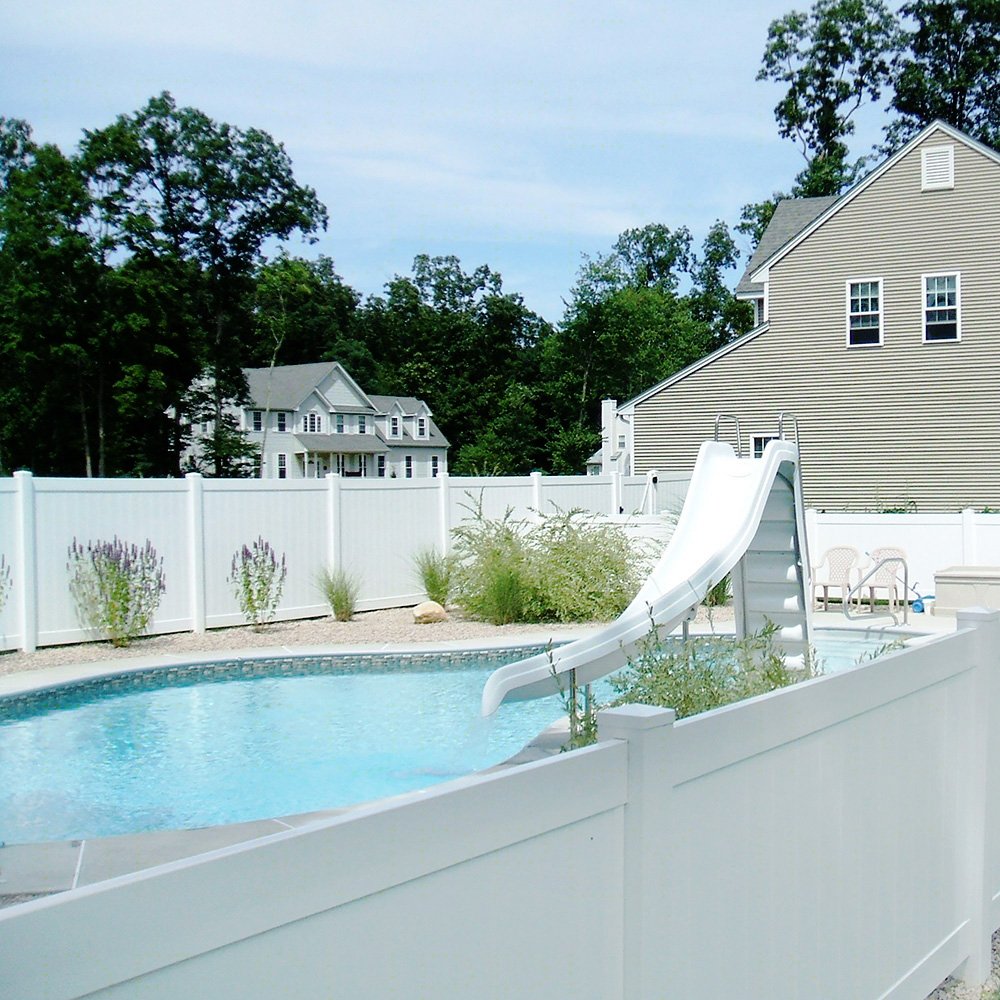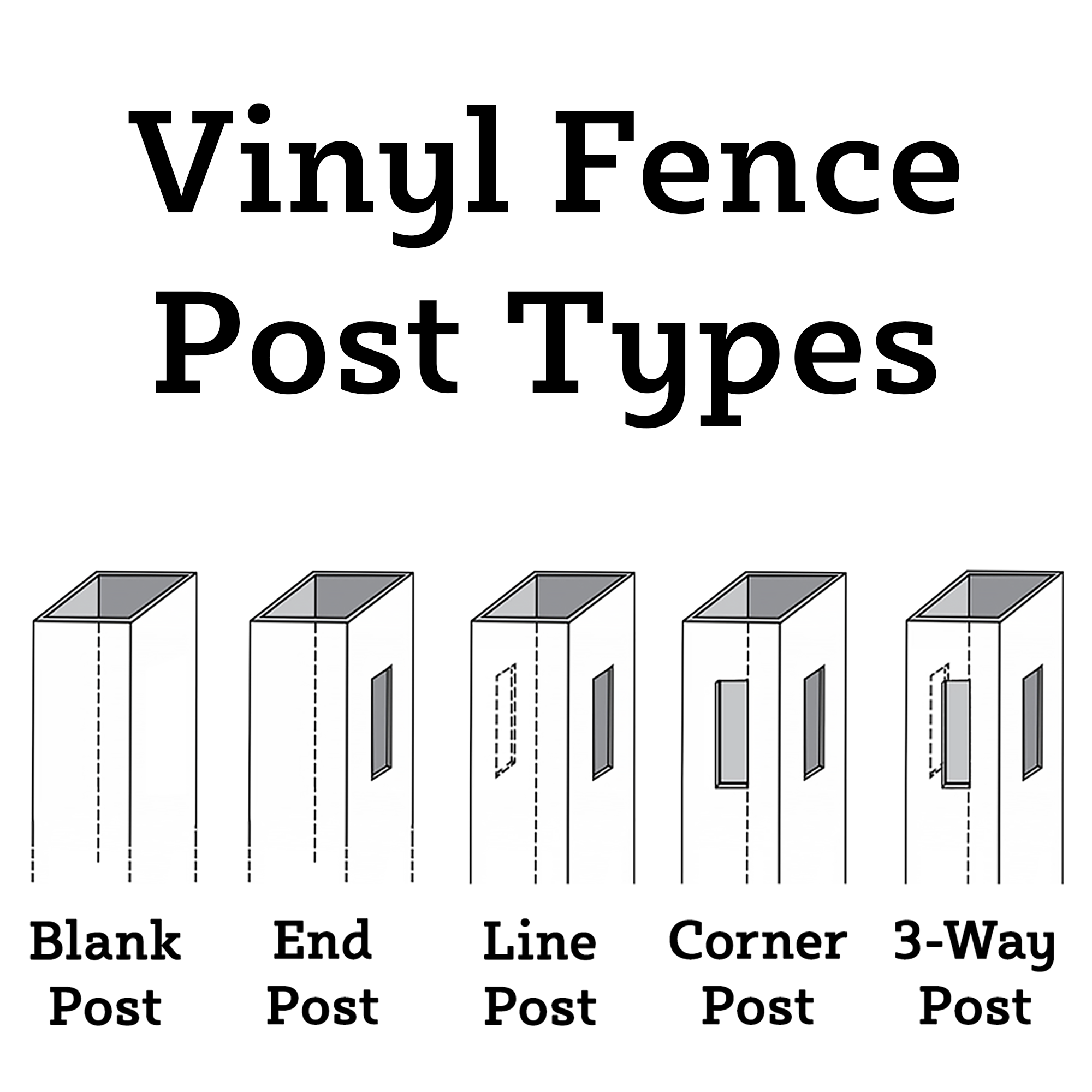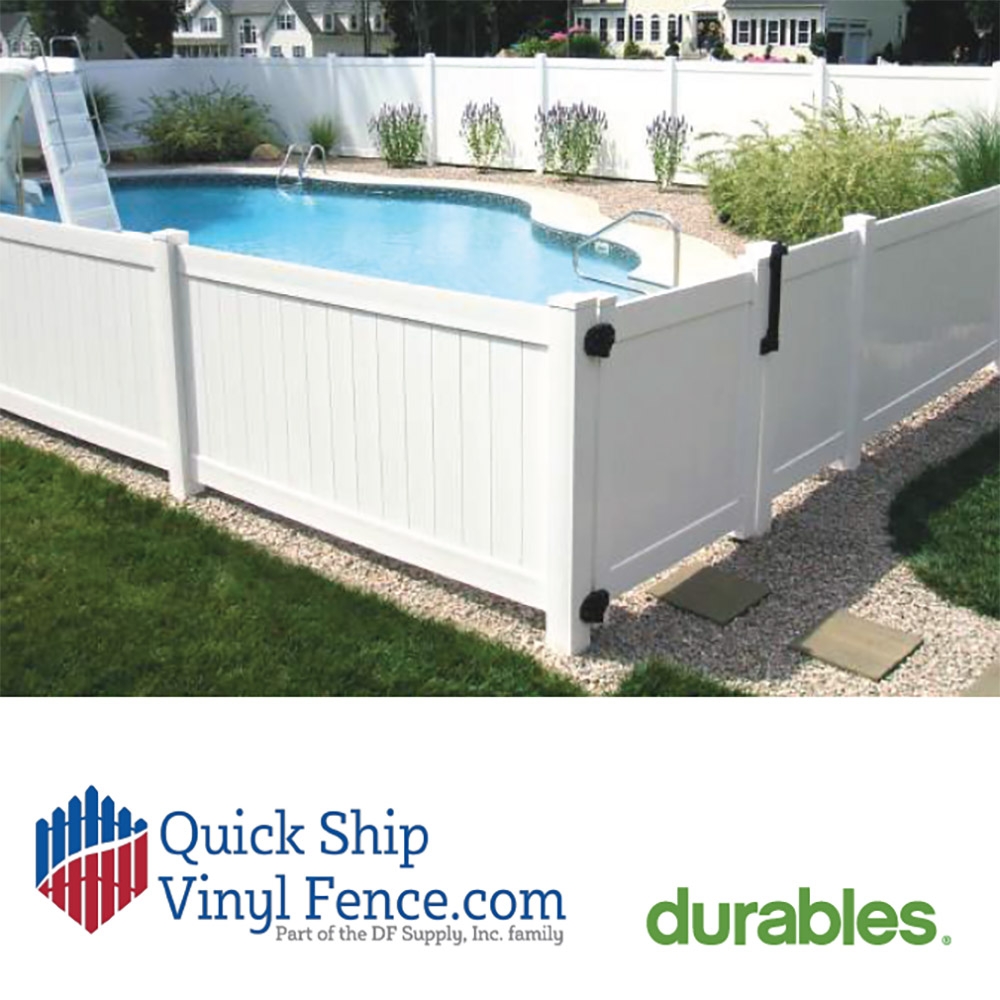Installation Measurement Guide For Vinyl Fences
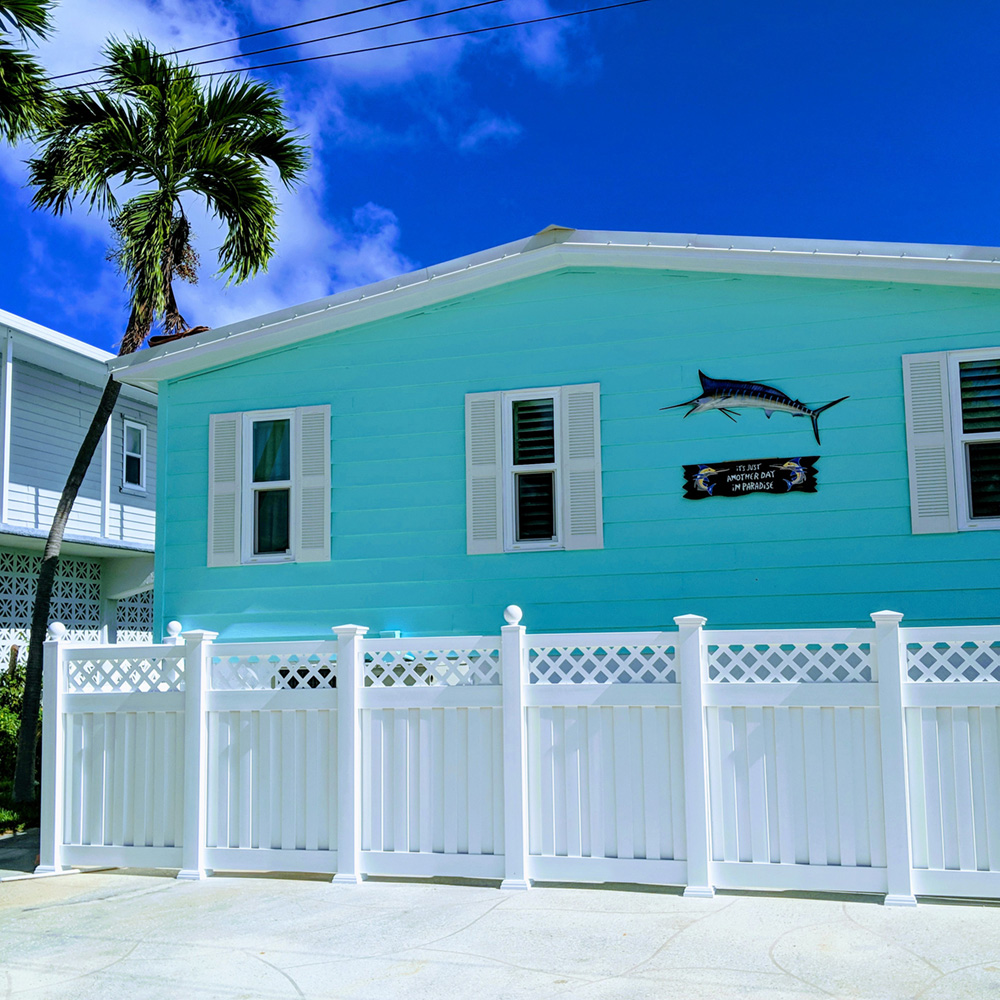
If you've decided to install a vinyl fence, the complicated part, sometimes more so than installation, is finding how much of each part you need for your vinyl fence. Do you need three line posts, four end posts, and seven sections of vinyl fences? What even is a blank gate post? If all of this sounds like nonsense, you're not the only one. It can be confusing when installing a vinyl fence for the first time. But fear not; in this guide, we'll break down everything you need to know about how to measure for your fence, and best of all, it's a lot easier than you think.
Before Even Installing Your Vinyl Fence
Before even considering installing your vinyl fence, you must confirm you have taken some safety measures.
- First, check with a regulatory agency for code specifications in your area and call the local utility number to find out where there are underground lines before making any holes.
- Next, find out what installation method you will use (straight, sloped, stepped, or combined).
- After this, you will sketch how your fence will be placed in your yard and calculate the number of panels, gates, and posts required. Remember that whenever you finish a fence run, you will need an end or corner post to finish the run. Also, remember that it is done once you set the post in concrete. You cannot move or rearrange your posts once they are set.
- Before assembling anything else, complete the gate to determine how much space you need when the gate is opened, including the proper space for hardware. You will also need enough clearance on the bottom of your gate to let it swing freely. If you take this step, you will have a more symmetrical fence installation since the gate will set the height for the rest of your fence.
- Only install one post and section at a time when installing your fence.
- Finally, allow a 2" clearance between the bottom of your panels and the ground. Sometimes, contractors rest a bottom rail on a wood 2 x 4 to keep everything level when installing the panel.
How To Set Up A Vinyl Fence Around Your House
A vinyl fence around your house usually will consist of line posts making up the outside perimeter while corner posts are added to the corners. End posts mark when a fence section will end.
Types Of Post Styles Available For Your Fence
When making your fence, there are a variety of post styles that you may need to ensure your fence is installed correctly.
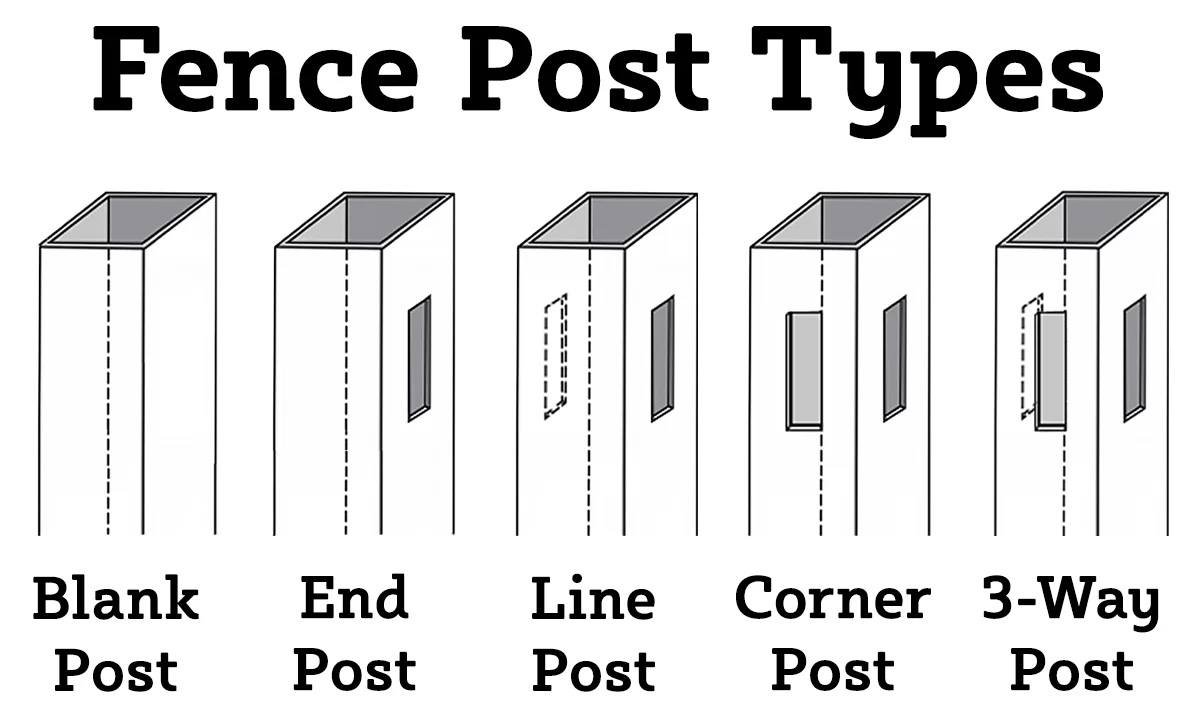
Some post options include:
- Line Post: Are ready to accept fence panels on both sides.
- Corner Posts: Used anywhere there is a 90-degree angle.
- End Posts: Can be used to complete a run or used in between gates.
- Blank Posts: Used on the other side of the gate without a hinge, a fence panel will not be attached. These are usually used if your gate is against your house or another concrete structure.
- 3-Way Posts: These are created to continue the fence line and when needing to turn a corner.
- Measure around your fence and find the linear footage. You can do this using a tape measure or any tool to take measurements.
- After you complete this, round your linear footage to the nearest foot. (Remember that if the 8-foot and 6-foot sections are the same height, you can mix and match these to find the required sections for your project.)
- For example, if you measure 105 feet as the area you will need to fence in and want only to use 8-foot sections, you will need to round up to 14 complete sections. (Remember that if you need to include a gate, you must account for this in the measurements of what required sections you will need.) You can cut the final section to make it fit your fence configuration.
- Usually, the number of line posts you will need for your fence will be one less than the sections required. Many people like to draw a diagram of how their yard is structured to get a good feel of how many line post sections they need.
- For example, if one part of your yard lengthwise is 75 linear feet, and you want to use sections that are 6 feet long, you will need 13 sections. You will then subtract one from this number and get 12. This is how many line posts you need. Remember to add a corner and end posts to this selection.
- The measurement of your gate will also determine how many sections and posts you will need. Always make sure to account for your gate before purchasing fence sections.
- When installing a gate, ensure you figure out how the gate will swing before installation and that you accommodate the gate hardware between your gate posts. Usually, a 1" gap is used to allow enough space for the hinge and latch.
The best part about vinyl fences is that they can be cut like wood. So, if you have a section that does not fit your backyard measurements, you can cut it to make it work.
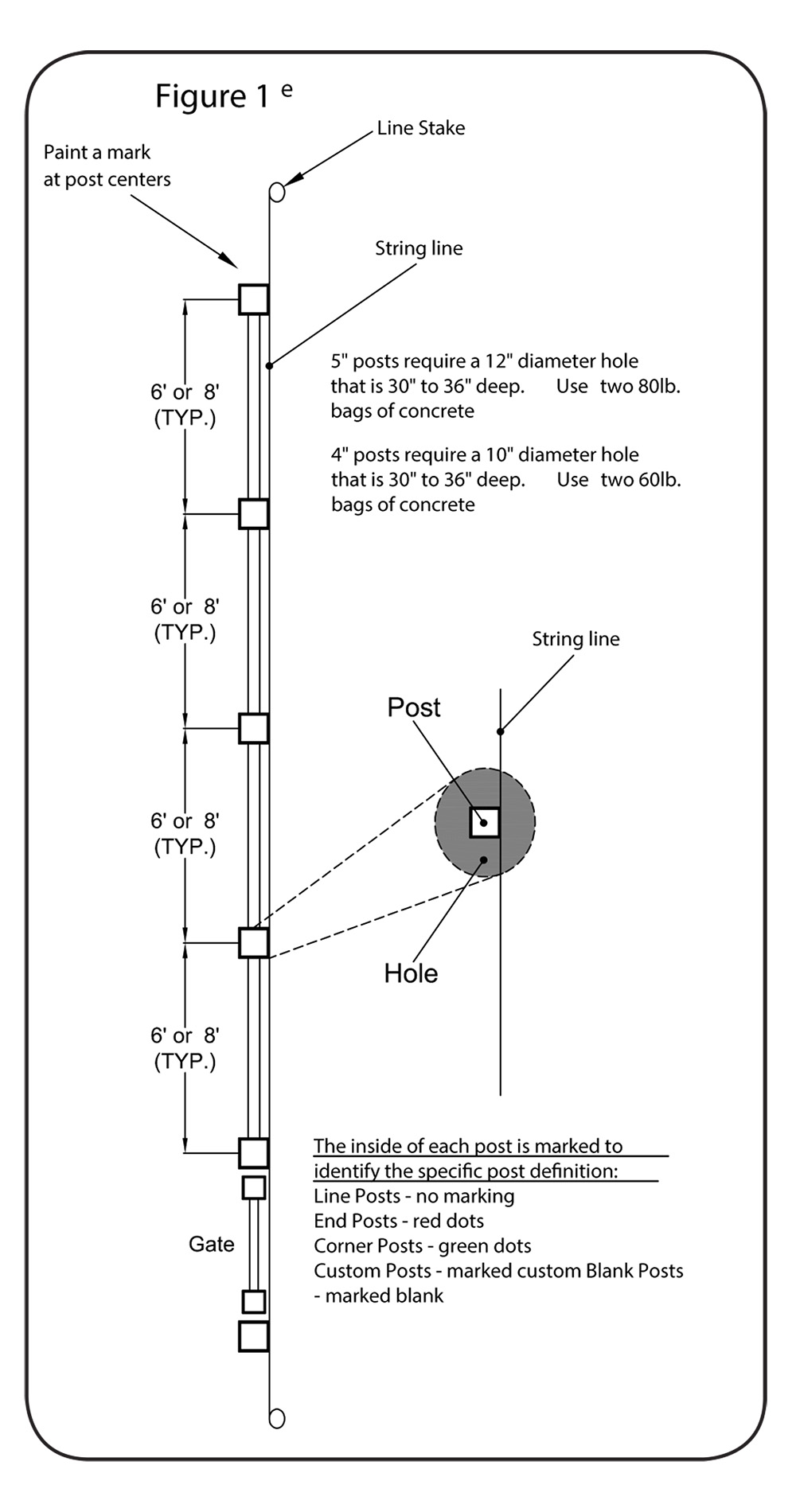
Measuring For Your Vinyl Fence
Remember that you can purchase eight or six-foot sections in length when measuring for a vinyl fence. You can mix and match these sections depending on the length of your yard. It usually helps to draw a square diagram of the footage around your yard. Remember to include your gate measurements and how many gates you will require. Depending on what gate you select and the hardware you will need, you may need to measure your gate after it is assembled to get proper inside dimensions. For example, if your gate is 44.5" wide and requires 2" for gate hardware, your dimensions will now be 46.5".
To start measuring for your fence sections:
The sections will be the first thing you measure for.
Example Of Measurements For A Yard Based On 6-Foot Vinyl Fence Sections
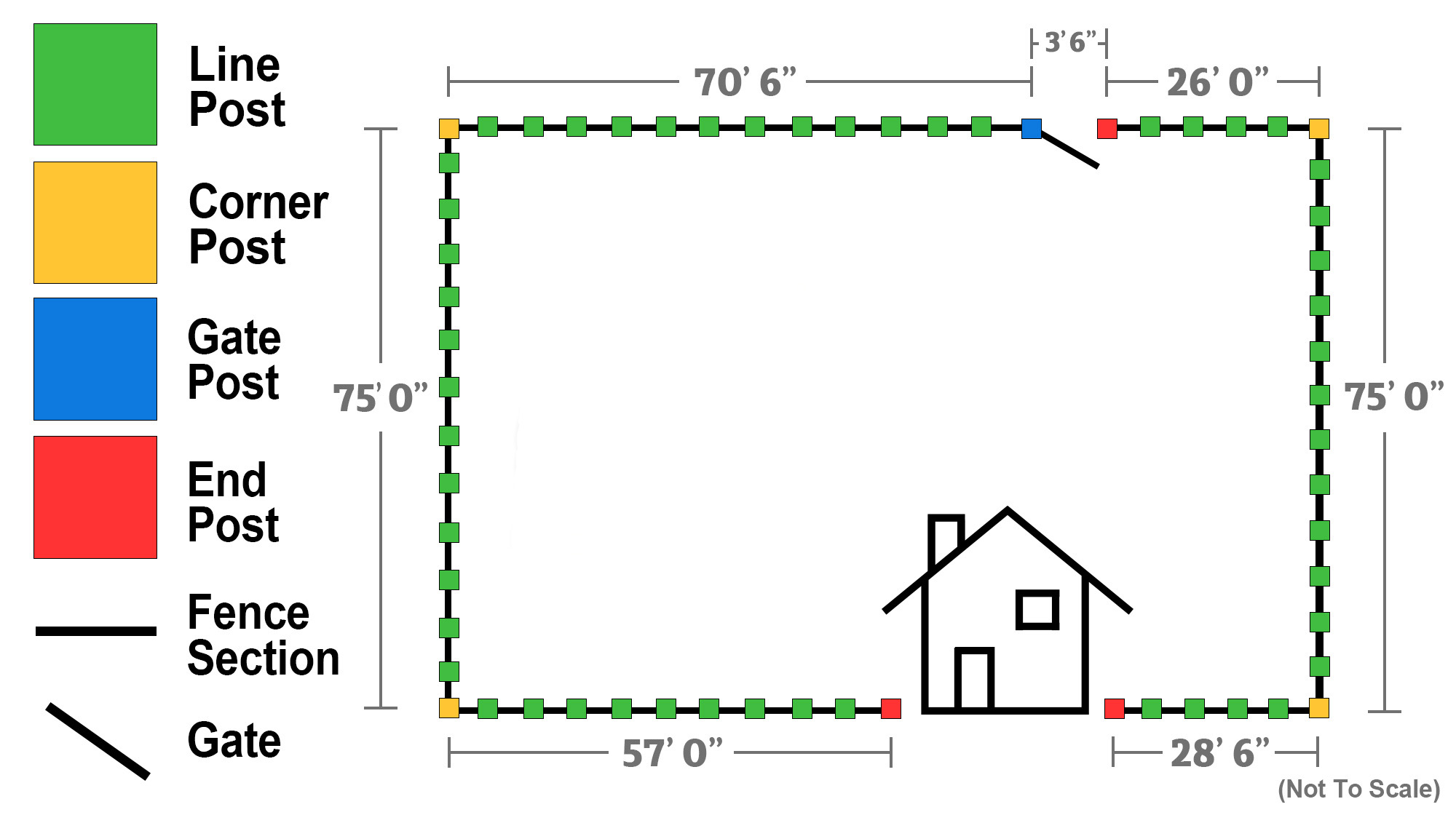
How Do I Measure For Posts?
You will likely need corner, line, and end posts to complete your setup with any fence configuration. The corner post will go anywhere you need to complete a corner. While the end post will mark the end of a section of fencing. Line posts keep attaching fence sections and continue the line of posts.
To measure how many posts you will need:
Measuring For A Gate For Your Vinyl Fence Posts
If you plan on using a gate for your vinyl fence, you will need to include the two end posts if it is a single gate, and if you plan on installing the gate up against your house, you will need blank and end posts.
Will You Need To Use The Stepping Or Racking Method For Your Fence Installation?
Another thing to consider is if your fence will go up a hill. If you notice a slope in your fence installation, you will need to run a string line to determine the slope of your yard. After you mark the slope, check the specifications of your fence to ensure it can accommodate the slope.
If your slope is quite steep, you should use the stepping method. The stepping method makes the fence even on the ground instead of at the top with the other posts.
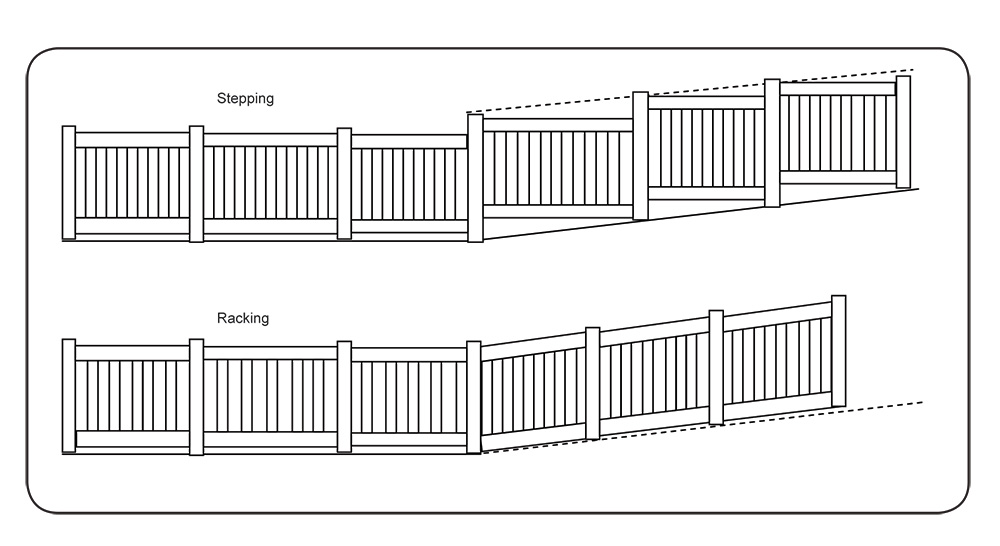
Stepping Installation Methods
- Use end posts instead of line posts and cut holes on the blank side of posts to allow for even installation.
- Use end posts instead of line posts and use u-mount brackets on the blank side of the posts at the ideal length you have determined.
- Use blank posts and place u-mount brackets on both sides of the posts.
Remember these important tips before getting started:
- Steeper inclines may need longer posts.
- If you use u-mount brackets, rails must be shortened because they will not go inside the posts.
- Make sure to install a panel and one post at a time.
Video Guide For Measuring And Installing Vinyl Fence
To make your vinyl fence installation process even easier, we’ve added a step-by-step video guide to complement this written resource. Whether you're a visual learner or just want to see the process in action, this video walks you through measuring and planning your layout and installing posts correctly. Watching the guide alongside your installation can help you avoid common mistakes, better understand tricky steps, and feel more confident tackling the project on your own.
The video also includes additional context that may be helpful depending on your specific situation. It provides another layer of guidance that works well in tandem with the written instructions and can help clarify some of the finer points of the process. Even if you’re already familiar with the basics, the video is a useful companion that might cover details you hadn’t considered.
For more informational videos, guides, and product overviews, check out our youtube channel!
Measuring For Your Vinyl Fence
While measuring for a vinyl fence can sound confusing, it is easier than it may seem. The key is to measure and plan out your yard's layout carefully. Remember to mark where corners will go, how many sections and line posts you need, and the slope if necessary.
Some Key Details About Vinyl Fence Measurements:
- You need to measure the linear footage of your yard, marking how many sections you will need.
- Remember that if you need several vinyl fence sections for one line (the length of one side of your yard), you will need one less vinyl fence line post than the measured sections.
- Include your gate in your measurements and account for where it will fit. The gate will help determine the sections needed, too.
Once you have figured this out, it is time to purchase your vinyl fence. If you still have questions about vinyl fences and measurements, please get in touch with us today. Our helpful sales representatives will be happy to help.
This should only be used as a guide; the results should not be interpreted as final advice or as a resource that can be applied to any particular situation. They are not meant to be used or relied upon. QuickShipVinylFence.com is not responsible for any errors or miscalculations due to improper measurements.
